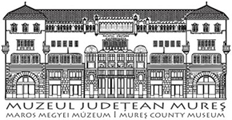Marisia - Maros Megyei Múzeum Évkönyve 31/1. (2011)
Book Review
Gáli Erwin, Doboka-IV. vártérség templom körüli temetője: régészeti adatok egy észak-erdélyi ispáni központ 11-13. századi fejlődéséhez (The churchyard cemetery in Däbäca/Doboka, castle area IV: archeological data on the development of a north Transylvanian county centre in the 11.-13"' centuries), Kolozsvár, Erdélyi Múzeum Egyesület, 2011,232 pages, 70 plates, 35 figures, one large general plan. Book review by Zalán GYŐRFI Gáli Erwin’s work published by the Transylvanian Museum Society redeems and old debt of Transylvanian archaeology of the early Middle Ages. As the author’s preface and the research’s historical overview states it, several studies concerning Doboka have been published and many have used and abused them for scientific or pseudo- scientific historical reconstructions or arguments. The first chapter reveals that this is not only a scientific research, as Doboka has always been the object of academic policy and prestige, a question of major importance for the Romanian national archaeology’. Theories and interpretations based mostly on historical and linguistic data have only used archaeological information as auxiliary. Besides the scanty information of documents, difficulties in interpreting the archaeological legacy of the cemetery around the church in the IV castle area also arise from the complete lack of bones. The second chapter deals with the burial customs. After clarifying some methodological and theoretical percept as well as the rite, the author gives a detailed and extensive analysis of the cemetery and its structural elements, taking several aspects into consideration (shape, size, depth and orientation of the graves; position of the skeleton; position of the arms; unusual positions; oboluses in the graves). These make the cemetery in Doboka one of the many already revealed cemeteries of the early Hungarian kingdom, created around a church. Its population was a colourful community with diverse customs and identities. The third chapter, dedicated to the analysis of the finds, also discusses a few methodological problems and considerations that reoccur when discussing the different object types. The findings include some fashion items, also found in other contemporary cemeteries of the Carpathian basin, in the same proportions: different types of simple or S shaped hair rings, hairpins, pearls, rings and bracelets. The author makes a useful point when suggesting that some objects may have had different functions, according to the context (e.g. hair rings, hairpins). The finds confirm the existence of the dividing line that separates the cemetery into the north-eastern and the north-western part, observed in the chapter dedicated to the cemetery’s structure. The last chapter is an assessment of the research. If one only takes the cemetery’s partial excavation into consideration, the author’s caution when drawing conclusions is justified. With MARISIA XXXI, p. 347-348
